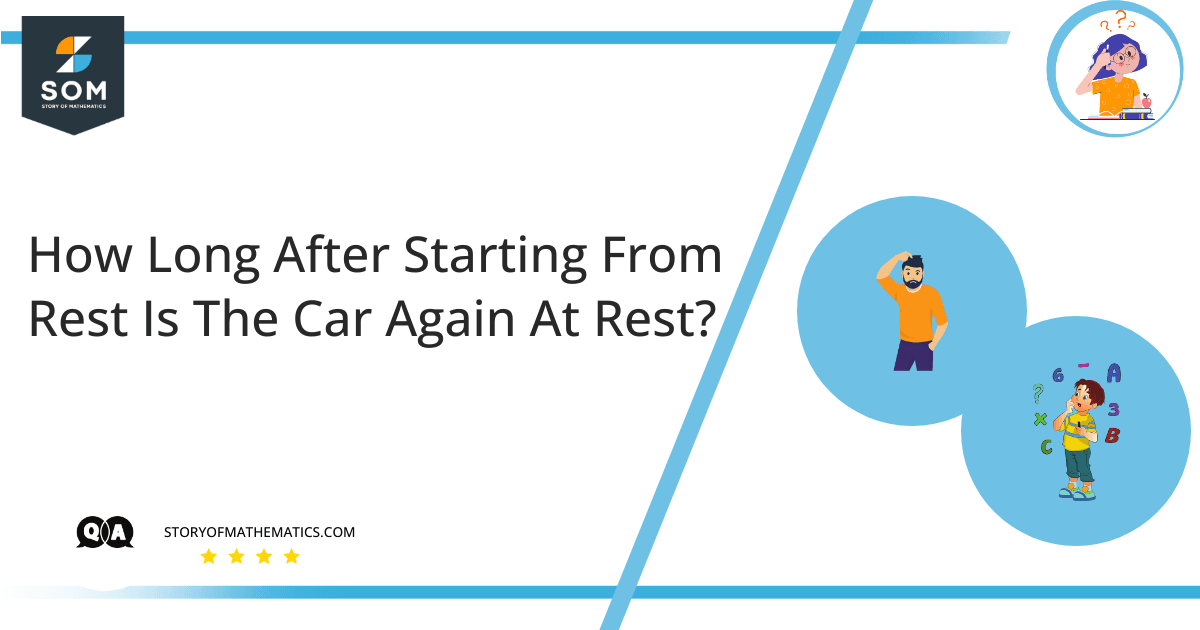
This problem aims to familiarize us with velocity and its kinds, such as instantaneous velocity, and average velocity. The concepts required for this problem are as mentioned, but it would be helpful if you are familiar with distance and speed relations.
Now the instantaneous velocity of an object is defined as the rate of change of position of an object for a particular time interval or it is the limit of the intermediate velocity as the total time closes to zero.
Whereas the average velocity is described as the difference in displacement divided by the time in which the displacement happens. It can be negative or positive relying on the direction of the displacement. Like average velocity, the instantaneous velocity is a vector quantity.
Expert Answer
Part a:
We are given an expression which is the distance of the car from the traffic light:
\[x(t) =bt^2 – ct^3\]
Where $b = 2.40 ms^{-2}$, and $c = 0.120 ms^{-3}$.
Since we are given a time, we can easily calculate the average velocity using the formula:
\[ v_{x,avg}=\dfrac{\bigtriangleup x}{\bigtriangleup t}\]
Here, $\bigtriangleup x = x_f – x_i$ and, $\bigtriangleup t = t_f – t_i$
Where,
$x_f = 0 m\space and\space x_i = 120 m$
$t_f = 10 s\space and\space t_i = 0 s$
\[v_{x,avg} =\dfrac{ x_f – x_i}{t_f – t_i} \]
\[v_{x,avg} =\dfrac{ 120 – 0}{10 – 0} \]
\[v_{x,avg} = 12\space m/s \]
Part b:
The instantaneous velocity can be calculated using various formulas but for this particular problem, we are going to use the derivative. Thus, the instantaneous velocity is just the derivative of $x$ with respect to $t$:
\[v_x = \dfrac{dx}{dt} \]
Derivating the distance expression with respect to $x$:
\[x(t) = bt^2 – ct^3 \]
\[v_x = 2bt – 3ct^2 \space (Eq.1)\]
Instantaneous velocity at $t = 0 s$,
\[v_x = 0 \space m/s\]
Instantaneous velocity at $t = 5 s$,
\[v_x = 2(2.40)(5) – 3(0.120)(5)^2 \space m/s\]
\[v_x = 15 \space m/s\]
Instantaneous velocity at $t = 10 s$,
\[v_x = 2(2.40)(10) – 3(0.120)(10)^2 \space m/s\]
\[v_x = 12 \space m/s\]
Part c:
Since the car is at rest, its initial velocity is $0 m/s$. using $Eq.1$:
\[ 0 = 2bt – 3ct^2\]
\[ t = \dfrac{2b}{3c}\]
\[ t = \dfrac{2(2.40)}{3(0.120)}\]
\[ t = 13.33 \space s\]
Numerical Result
Part a: The average velocity of the car is $ v_{x,avg} = 12 \space m/s$.
Part b: The instantaneous velocity of the car is $v_x = 0 \space m/s, \space 15\space m/s$ ,and $12\space m/s $.
Part c: The time for the car to again reach the rest state is $t = 13.33 \space s$.
Example
What is the average velocity of a car in a given time interval if the car moves $7 m$ in $4 s$ and $18 m$ in $6 s$ in a straight line?
Given that:
\[ s_1 = 7 \space m\]
\[ t_1 = 4 \space s\]
\[s_2 = 18 \space m\]
\[t_2 = 6 \space s\]
\[v_{x,avg} = \dfrac{s_2 – s_1}{t_2 – t_1}\]
\[v_{x,avg} = \dfrac{18 – 7}{6 – 4}\]
\[v_{x,avg} = \dfrac{11}{2}\]
\[v_{x,avg} = 5.5 \space m/s\]
